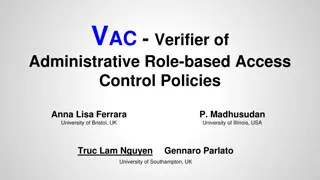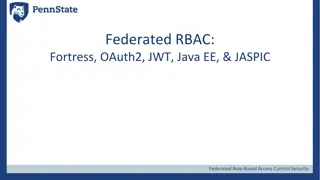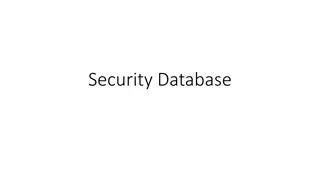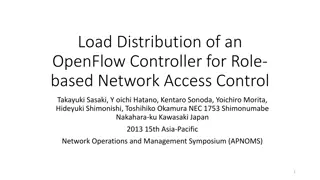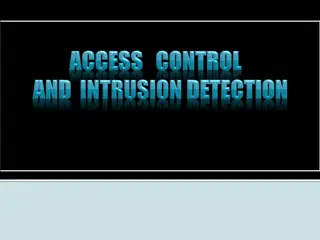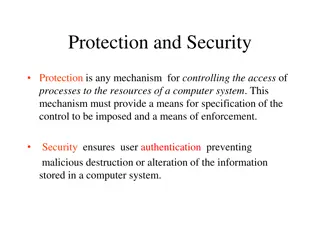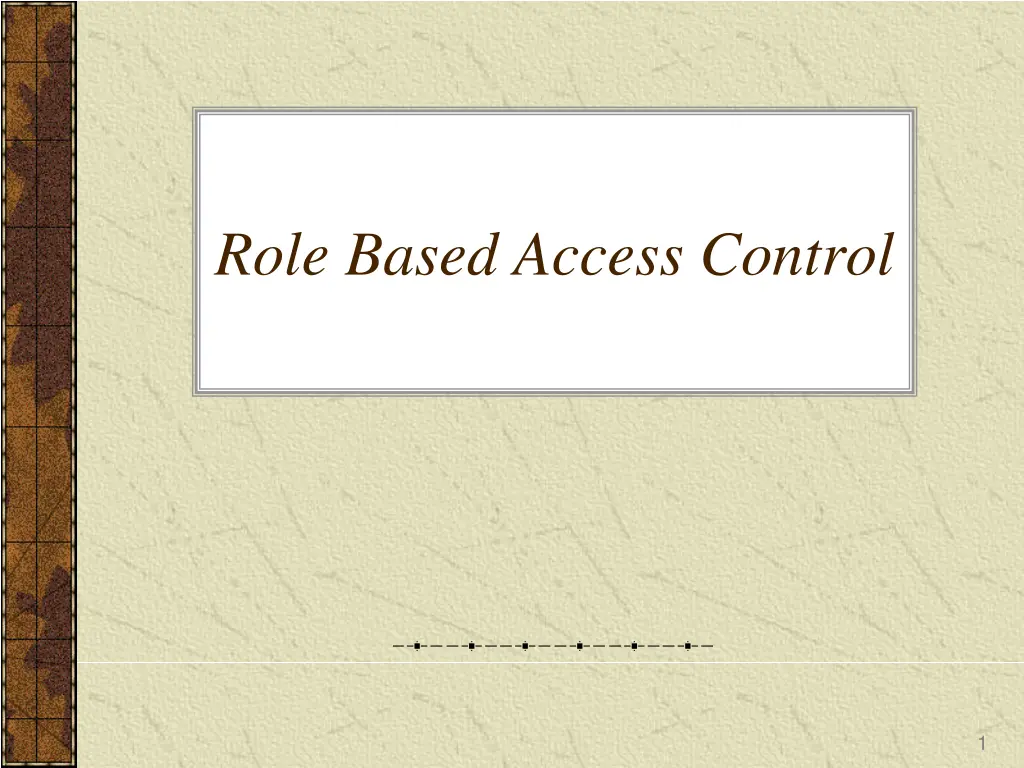
Understanding Role-Based Access Control (RBAC)
Learn about Role-Based Access Control (RBAC), a method that organizations use to manage access rights based on the roles of individual users. RBAC simplifies user assignments, enhances security, and supports key security principles such as least privilege and separation of duties.
Download Presentation

Please find below an Image/Link to download the presentation.
The content on the website is provided AS IS for your information and personal use only. It may not be sold, licensed, or shared on other websites without obtaining consent from the author. If you encounter any issues during the download, it is possible that the publisher has removed the file from their server.
You are allowed to download the files provided on this website for personal or commercial use, subject to the condition that they are used lawfully. All files are the property of their respective owners.
The content on the website is provided AS IS for your information and personal use only. It may not be sold, licensed, or shared on other websites without obtaining consent from the author.
E N D
Presentation Transcript
RBAC Many organizations base access control decisions on the roles that individual users take on as part of the organization . They prefer to centrally control and maintain access rights that reflect the organization s protection guidelines. With RBAC, role-permission relationships can be predefined, which makes it simple to assign users to the predefined roles. The combination of users and permissions tend to change over time, the permissions associated with a role are more stable. RBAC concept supports three well-known security principles: Least privilege Separation of duties Data abstraction 2
Role Based Access Control (RBAC) Access control in organizations is based on roles that individual users take on as part of the organization A role is is a collection of permissions 3
RBAC Access depends on role/function, not identity Example: Allison is bookkeeper for Math Dept. She has access to financial records. If she leaves and Betty is hired as the new bookkeeper, Betty now has access to those records. The role of bookkeeper dictates access, not the identity of the individual. 4
Advantages of RBAC Allows Efficient Security Management Administrative roles, Role hierarchy Principle of least privilege allows minimizing damage Separation of Duties constraints to prevent fraud Allows grouping of objects Policy-neutral - Provides generality 5
RBAC Users Users Permission Permissions Manager u1 o1 u1 o1 Senior Engineer Senior u2 o2 u2 o2 Role r Administrator Administrator Engineer un om un om n m Employee n + m assignments assignments (a) (b) 6
Core RBAC (relations) Permissions = 2Operations x Objects UA Users x Roles PA Permissions x Roles assigned_users: Roles 2Users assigned_permissions: Roles 2Permissions Op(p): set of operations associated with permission p Ob(p): set of objects associated with permission p user_sessions: Users 2Sessions session_user: Sessions Users session_roles: Sessions 2Roles session_roles(s) = {r | (session_user(s), r) UA)} avail_session_perms: Sessions 2Permissions 7
RBAC (NIST Standard) PA UA Users Roles Operations Objects Permissions user_sessions (one-to-many) role_sessions (many-to-many) Sessions 8
Separation of Duties No user should be given enough privileges to misuse the system on their own. Statically: defining the conflicting roles Dynamically: Enforcing the control at access time 9

